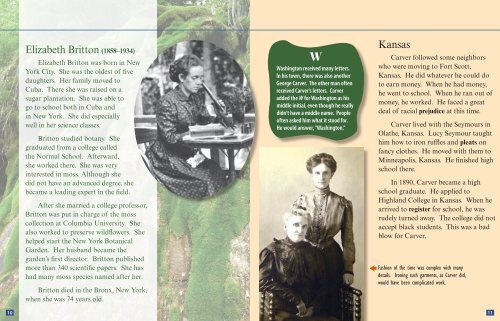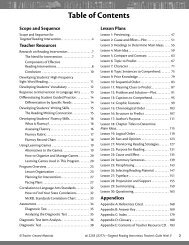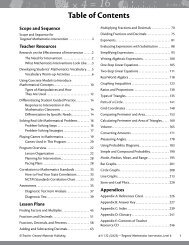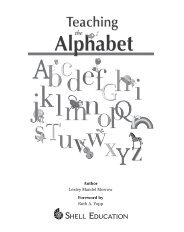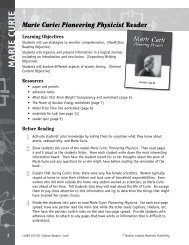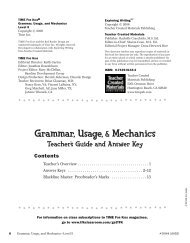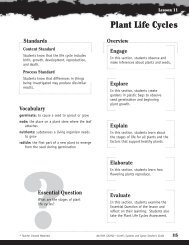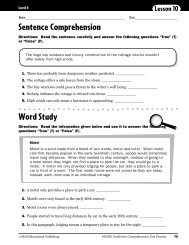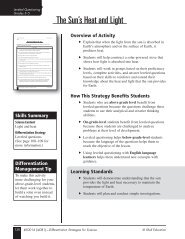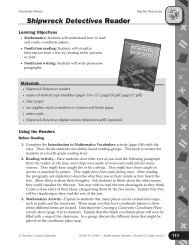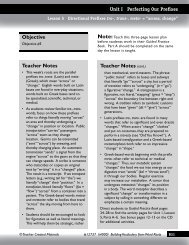George Washington Carver - Teacher Created Materials
George Washington Carver - Teacher Created Materials
George Washington Carver - Teacher Created Materials
You also want an ePaper? Increase the reach of your titles
YUMPU automatically turns print PDFs into web optimized ePapers that Google loves.
Elizabeth Britton (1858–1934)<br />
Elizabeth Britton was born in New<br />
York City. She was the oldest of five<br />
daughters. Her family moved to<br />
Cuba. There she was raised on a<br />
sugar plantation. She was able to<br />
go to school both in Cuba and<br />
in New York. She did especially<br />
well in her science classes.<br />
Britton studied botany. She<br />
graduated from a college called<br />
the Normal School. Afterward,<br />
she worked there. She was very<br />
interested in moss. Although she<br />
did not have an advanced degree, she<br />
became a leading expert in the field.<br />
After she married a college professor,<br />
Britton was put in charge of the moss<br />
collection at Columbia University. She<br />
also worked to preserve wildflowers. She<br />
helped start the New York Botanical<br />
Garden. Her husband became the<br />
garden’s first director. Britton published<br />
more than 340 scientific papers. She has<br />
had many moss species named after her.<br />
Britton died in the Bronx, New York,<br />
when she was 74 years old.<br />
W<br />
<strong>Washington</strong> received many letters.<br />
In his town, there was also another<br />
<strong>George</strong> <strong>Carver</strong>. The other man often<br />
received <strong>Carver</strong>’s letters. <strong>Carver</strong><br />
added the W for <strong>Washington</strong> as his<br />
middle initial, even though he really<br />
didn’t have a middle name. People<br />
often asked him what it stood for.<br />
He would answer, “<strong>Washington</strong>.”<br />
Kansas<br />
<strong>Carver</strong> followed some neighbors<br />
who were moving to Fort Scott,<br />
Kansas. He did whatever he could do<br />
to earn money. When he had money,<br />
he went to school. When he ran out of<br />
money, he worked. He faced a great<br />
deal of racial prejudice at this time.<br />
<strong>Carver</strong> lived with the Seymours in<br />
Olathe, Kansas. Lucy Seymour taught<br />
him how to iron ruffles and pleats on<br />
fancy clothes. He moved with them to<br />
Minneapolis, Kansas. He finished high<br />
school there.<br />
In 1890, <strong>Carver</strong> became a high<br />
school graduate. He applied to<br />
Highland College in Kansas. When he<br />
arrived to register for school, he was<br />
rudely turned away. The college did not<br />
accept black students. This was a bad<br />
blow for <strong>Carver</strong>.<br />
Fashion of the time was complex with many<br />
details. Ironing such garments, as <strong>Carver</strong> did,<br />
would have been complicated work.<br />
10 11


